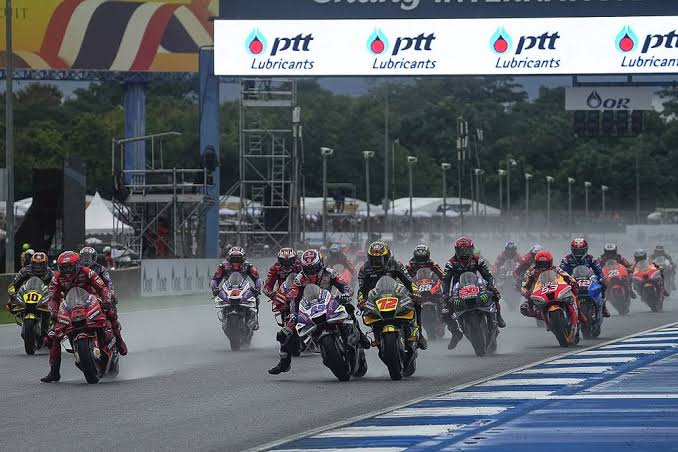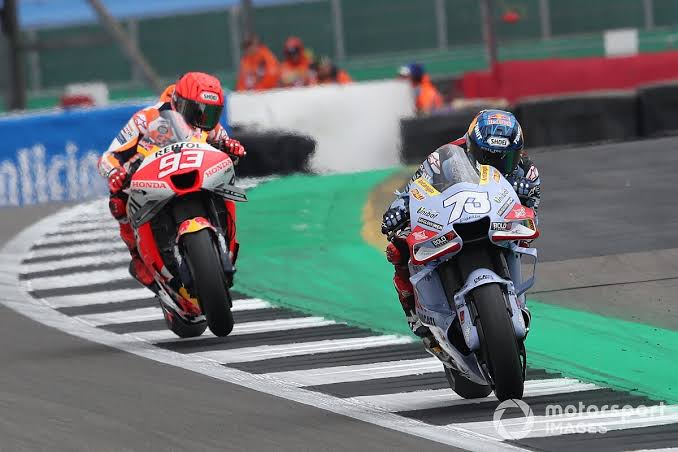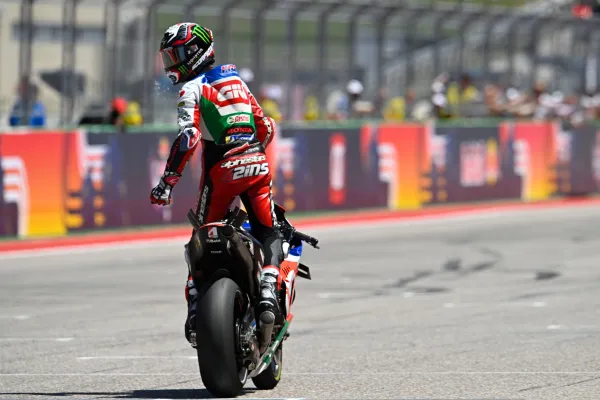What F1’s Weight Increase Reveals About The Sport’s Evolving Safety Standards
The world of Formula 1 (F1) is characterized by the uncompromising pursuit of speed, precision, and technological progress. Behind the flash and glory of high-speed racing, however, lies a web of regulation aimed at preserving the drivers’ safety and competitive equality. Among the most dramatic developments in the area in the recent past is the lifting, in the 2025 season, of the minimum weight of the cars from 798 kg to 800 kg. This change isn’t merely a technical adjustment; it’s symptomatic of a broader shift in the quality of the standard of safety, health issues among drivers, and the sport’s consistent concern about equity.
This article discusses the implications of the additional weight, the historic context, the reasons, the impact on drivers and crews, and how it fits into the emerging safety standards in F1.
Historical Context of Weight Control in F1
Early Regulations and Safety Issues
Formula 1’s past is marked by glory and tragedy. The beginning years of the sport were marked by lethal accidents, and the trend only switched to improved security in the face of the accidents. The FIA (Fédération Internationale de l’Automobile) responded strongly to the 1994 tragedy, in which Ayrton Senna and Roland Ratzenberger died in the course of a weekend’s worth of racing. The FIA acted by implementing a raft of regulations to increase the security of the drivers, including tougher impact structures, mandatory belts, and the use of head protection devices.
The Evolution of Weight Regulation
Over time, the developments in the safety components also contributed to the added weight in the cars. The introduction, for example, of the Kinetic Energy Recovery System (KERS) in 2009 added approximately 30-40 kg to the cars’ weights because the components were added to support the hybrid technology. The minimum in 2014, by the introduction of the turbo-hybrid engines, reached approximately 690 kg.
In recent years, the trend also held. The minimum weight also rose from 768 kg in 2021 to 798 kg in 2024. The latest transition to 800 kg represents the attempt to accommodate developing technology while ensuring the priority remains security.
Reasons Behind the Gain in Weight
Enhancing Driver Safety
One of the most significant reasons to enhance the weights of cars is to increase the security of drivers. Cars become more powerful and quicker, and by so doing, become deadlier in accidents. More powerful and tougher security frames are in cars that are heavy, and they are also in a position to hold up to impacts. The imposition of cooling systems in drivers in extreme heat situations also portrays the concern about security. Following accidents during the 2023 Qatar Grand Prix in which different drivers faced heat issues, the FIA mandated the addition of cooling systems when the temperature crosses a point.
Leveling the Playing Field
The increase in minimum driving mass from 80 kg to 82 kg is another necessary component to this regulation transition. This transition in weights prevents the heavy drivers from having an advantage in comparison to the light drivers. The light drivers could gain an advantage by having less total mass in the cars, but the regulation tries to give a balanced playing ground to the drivers in the sport.
Technological Advancements
The integration of the most modern technologies, such as advanced electronic units and hybrid power units, also contributed to the mass of the cars. The employment of such technologies, required to increase the cars’ efficiency and the minimization of the cars’ impact on the environment, also contributed to the mass of the cars. The challenge to innovate and maintain the security regulation’s demands grows.
Implications for drivers and teams
Health Benefits for Drivers
The increase in minimum weights may provide health benefits to drivers because they will no longer feel the need to maintain restrictive eating regimes or strenuous exercise routines to attain required weights. This provides them with more independence in what they are eating and could positively influence their health.
For instance, drivers such as George Russell and Lando Norris publicly shared how extreme dieting in the past seasons affected their health. Now, under less restrictive weight control, they are in a position to focus solely on optimal performance and avoid risking health.
Competitive Dynamics
From a competitive standpoint, heavier cars may alter race strategies and driving styles. Increased mass can affect acceleration, cornering speeds, and tire wear—factors that teams must now consider when developing their race strategies. Teams may need to rethink their approaches regarding aerodynamics and suspension setups as they adapt their designs to accommodate these changes.
Moreover, heavier cars could result in varying tire management techniques in the course of the races. The teams shall have to consider how added weight impacts tire wear in long runs and alter the pit stop strategy in response.
Financial Implications for Teams
The increase in minimum weight could also affect the bottom lines of the teams in terms of investments in new tech or materials to attain the most efficient use under the new limitations. Some already have plans in the making to use light components or other materials to counteract added mass without the trade-off in terms of efficiency and safety, while others may see the need to make heavy investments just to remain competitive.
Future Directions in F1 Safety Standards
Continuous Evolution of Safety Features
As Formula 1 develops, so also shall the standard of safety. The addition of new technologies, such as the use of advanced materials in the construction of the cars, could offset some of the adverse effects linked to added weight and increase the protection of the drivers.
For instance, the investigation into the use of carbon fiber composites has already seen the manufacture of lighter and tougher components, to be potentially applied in future cars. Developments such as this are going to be necessary if F1 is to become compliant with new regulations and also to surpass the limitations in terms of performance at the same time.
Regulatory Adaptations
The FIA’s consistent focus on enhancing security will most likely result in additional regulation beyond the simple reduction in weights. Future regulation could involve enhancing the standard in the area of crash tests or requiring other security elements based on new evidence from accidents.
In addition, there may be increased scrutiny regarding track design and infrastructure improvements aimed at enhancing driver protection during races. As circuits evolve over time with new technologies being introduced into racing environments—such as virtual reality simulations used for track design—F1 can continue prioritizing both competition integrity and participant welfare.
Emphasis on Driver Welfare
The recent trends point to a greater concern about the well-being of drivers in the world of Formula 1. As the cars are tweaked to support greater cooling in unfavorable climatic conditions, the trend could also catch on in other arenas, including the support and physical conditioning regimes for the drivers.
Mental health has become a topic in the world of professional sporting events in the last few years, and so long-term strategies created solely to support the mental health of athletes could coexist alongside physical conditioning regimes based around building up resistance to the kind of pressure found in high-stress situations such as circuits.
Broader Implications for Motorsport
Influence on Other Racing Series
The changes to Formula 1 in terms of weight regulation could impact other motorsport divisions considering the same modifications in the interest of improved security standards throughout the different platforms—from the touring cars to the endurance racing—ultimately leading to greater harmony throughout global motorsports in terms of dealing with issues in terms of protection of drivers in addition to competitive equity among participants in terms of size and stature.
Public Perception and Fan Interaction
As Formula One develops the regulation to put the health and wellbeing at the forefront and to maintain the fun aspect among the crowd—those could impact public perception about motorsports in general in the direction of having more opportunities for fan drivers to compete amongst each other, bonding through admiration shared passion the world of motorsports in general.
Conclusion
The increase in Formula 1’s minimum car weight reflects a complex interplay between safety standards, competitive fairness, and technological advancements. By prioritizing driver safety through enhanced structural integrity while implementing measures promoting inclusivity among drivers of different sizes, F1 demonstrates its commitment to evolving alongside modern expectations.
As we look to the future, it’s evident that Formula One will only continue to adapt its regulation, both in terms of performance and in terms of the well-being of participants in this incredible sport. The balancing act between competing demands continues to be essential to face future challenges and retain status as one of the most spectacular motorsports in the world. In summary—this shift represents much more than mere numbers on paper; it symbolizes an ongoing evolution within one sport’s approach towards ensuring everyone involved—from engineers designing cutting-edge vehicles to drivers pushing limits behind the wheel—can thrive safely.





















